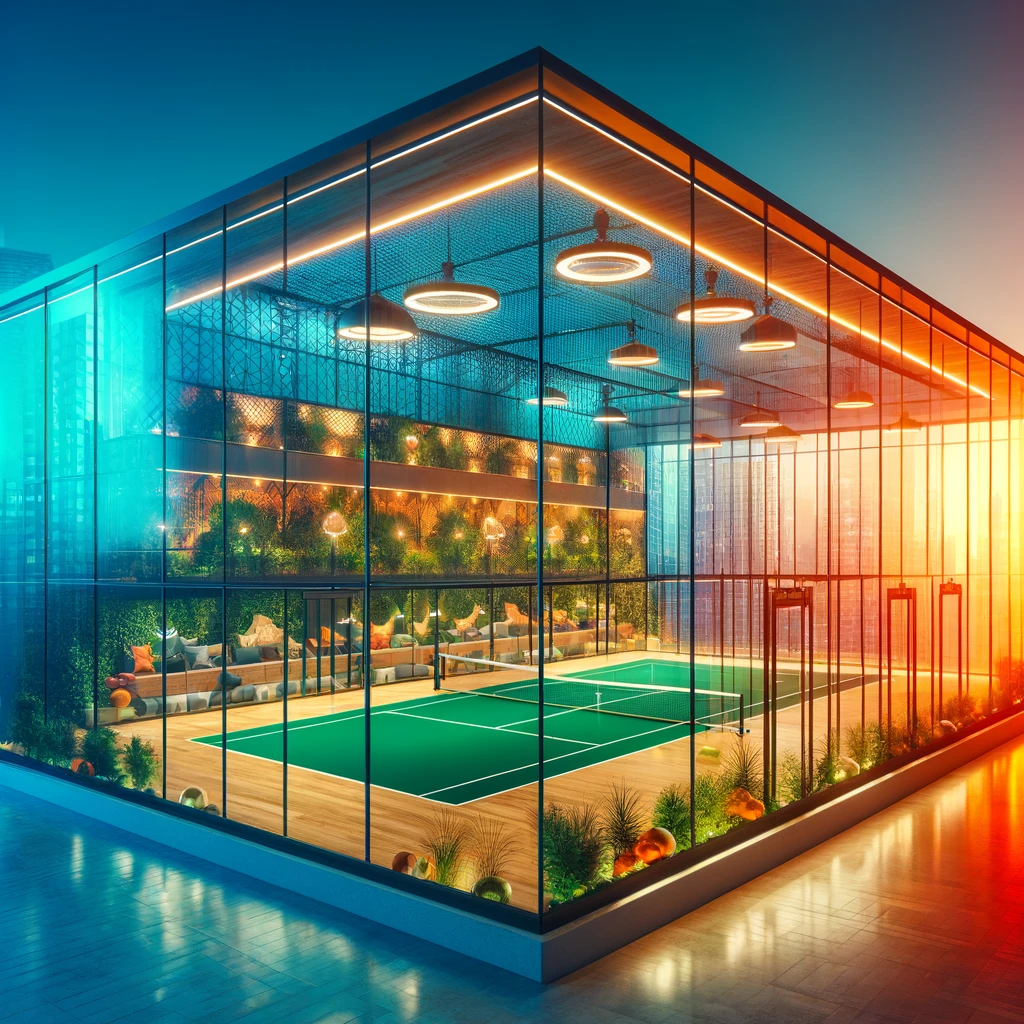How Much Is A Padel Court Worth? The Best Price
How much is a padel court worth? Padel, a racket sport that blends elements of tennis and squash, has seen a surge in popularity over recent years. Its engaging gameplay and shorter court size make it accessible, increasing its appeal among sports enthusiasts of all ages. With this rising interest comes the question for investors and sports facility owners: How much is a padel court worth?
In this article, we’ll dive into the various cost components involved in constructing a padel court. From initial land acquisition to the final touches of installation, we’ll provide a detailed cost breakdown that helps potential investors understand the financial commitment and potential returns of this popular sport. Whether you’re considering building a new facility or adding a padel court to your existing venue, knowing the potential costs and value it brings is crucial for making an informed decision.
Understanding Padel Court Components and Their Costs
Constructing a padel court involves several key components, each contributing to the overall cost and functionality of the facility. Here’s a detailed breakdown of what goes into building a padel court and the associated price tags:
1. Court Surface
The choice of surface material significantly affects both the cost and the playing experience. Common options include synthetic turf, carpet, and resin. Synthetic turf is popular due to its durability and low maintenance, typically costing between $5,000 to $7,000.
2. Walls and Fencing
Padel courts require four walls—usually a combination of glass and solid materials. Glass walls allow spectators to view the game and add a modern aesthetic, but increase the cost. The price for glass walls can range from $10,000 to $12,000, while metal fencing for the rest of the enclosure might cost between $2,000 to $4,000.
3. Lighting
Proper lighting is crucial for evening play. LED lighting systems are the most cost-effective and energy-efficient, with installation costs around $3,000 to $5,000 depending on the system’s complexity and the number of lights required.
4. Equipment
Basic equipment like nets, posts, and seating for players and spectators also contribute to costs. These essentials can range from $1,000 to $2,000.
Combining these elements, the raw material and equipment costs to set up a standard padel court can vary significantly based on choices in quality and supplier. However, these figures provide a foundational understanding of what financial investment is necessary to get started.
Initial Investments: Land and Preparations
Cost Considerations for Land Acquisition
Acquiring the right parcel of land is a critical initial investment when considering the construction of a padel court. The cost associated with land acquisition can vary greatly depending on several factors:
- Location: The price of land can fluctuate significantly based on its location. Urban areas, with their proximity to potential customers and amenities, tend to have higher land costs compared to rural areas. However, these locations may yield higher returns due to greater accessibility and potential customer base.
- Size and Zoning: The cost is also influenced by the size of the plot and its zoning restrictions. Larger plots provide more flexibility in terms of design and additional facilities but are typically more expensive. Ensure the land is zoned for commercial use or sports facilities, as rezoning can be a costly and time-consuming process.
Budgeting for Site Preparation and Planning
After securing the land, preparing the site for construction is the next step, which involves several key expenses:
- Site Surveys and Environmental Assessments: Before construction begins, it is essential to conduct thorough site surveys and environmental assessments to avoid future legal and environmental issues. These assessments help determine if the land is suitable for construction and ensure that the development complies with local environmental regulations.
- Infrastructure Development: Developing the necessary infrastructure includes creating access roads, installing utilities, and possibly building parking facilities. These are crucial for operational functionality and can significantly affect the overall cost.
- Permits and Legal Fees: Obtaining the necessary permits and paying associated legal fees are crucial steps in the pre-construction phase. Costs can vary widely depending on local laws and the scale of the project. This includes building permits, environmental permits, and possibly community consultation requirements.
Material Costs for Padel Courts

When planning the construction of a padel court, understanding the costs of materials is crucial. These materials not only determine the quality and durability of the court but also significantly impact the overall investment required.
Types of Materials and Costs
Surface Options
- Synthetic Turf: Preferred for its durability and low maintenance. Costs can range from $15 to $35 per square foot, including installation.
- Artificial Grass: Offers a softer playing surface, ideal for players’ joints. Pricing for high-quality artificial grass falls between $20 to $40 per square foot.
- Resin: Provides a smooth, fast-playing surface. It’s slightly more expensive, costing approximately $25 to $45 per square foot.
Walls and Fencing
- Glass Walls: Essential for visibility and aesthetics, but they are the costliest option, typically ranging from $200 to $300 per linear foot.
- Metal Fencing: Used around the court perimeter, costs about $50 to $100 per linear foot depending on the material quality and height.
Equipment Costs
- Nets and Posts: Basic necessities for a padel court, with prices generally ranging from $500 to $1,000 for high-quality options.
- Lighting: LED lighting systems are recommended for energy efficiency and longevity. Depending on the complexity and number of fixtures, installation can cost between $5,000 and $10,000.
Labor and Construction Costs
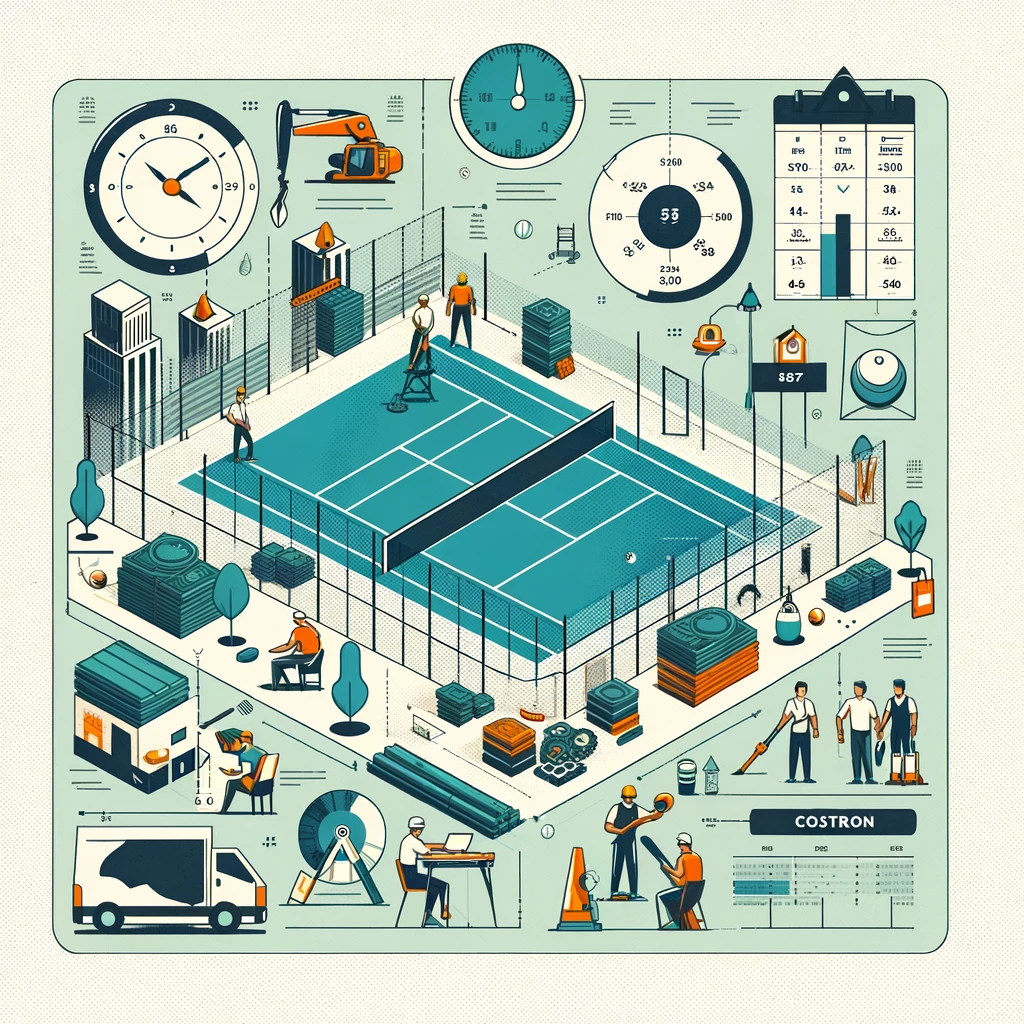
Constructing a padel court requires skilled labor and careful coordination, both of which are significant factors in the overall cost of the project. Here’s an overview of what to expect in terms of labor and construction expenses.
Labor Costs
- Professional Construction Teams: The labor cost for building a padel court can vary depending on the region and the expertise of the contractors. Typically, labor costs range from $10,000 to $20,000, which includes the work of skilled professionals such as civil engineers, electricians, and landscape architects.
- Project Management: Effective management is crucial to ensure that the construction process is seamless and on schedule. Hiring a project manager can add an additional $3,000 to $5,000 to the overall cost.
Construction Time and Additional Expenses
- Construction Duration: The time required to build a padel court generally ranges from one to three months, depending on the complexity of the project and weather conditions. Faster construction times are usually more expensive due to the need for more intensive labor.
- Unexpected Costs: It’s important to set aside a contingency budget for unexpected expenses such as delays due to weather, material delivery delays, or unforeseen legal issues. A typical contingency budget is around 10% of the total construction costs.
Legal and Permit Expenses

When building a padel court, navigating the legal landscape and securing the necessary permits is a crucial step that can have significant cost implications.
Necessary Permits and Legal Fees
- Building Permits: These are required to ensure the construction complies with local building codes and regulations. The cost can vary widely depending on the municipality but typically ranges from $500 to $2,000.
- Zoning Permits: If the land is not already zoned for recreational or sports facility use, rezoning permits will be necessary. This process can be lengthy and expensive, potentially costing several thousand dollars.
- Environmental Permits: Depending on the location, environmental permits may be needed to address issues like land use and water conservation. These permits help ensure that the construction will not adversely affect the local ecosystem.
Cost Variability by Location
The costs for these permits and legal fees can differ dramatically based on the project’s location. In urban areas, where regulations are often stricter, the costs can be higher. Additionally, the legal fees associated with navigating these permits can also add to the expenses, typically ranging from $2,000 to $5,000, depending on the complexity of the issues and the lawyer’s fees.
Additional Features and Their Impact on Price
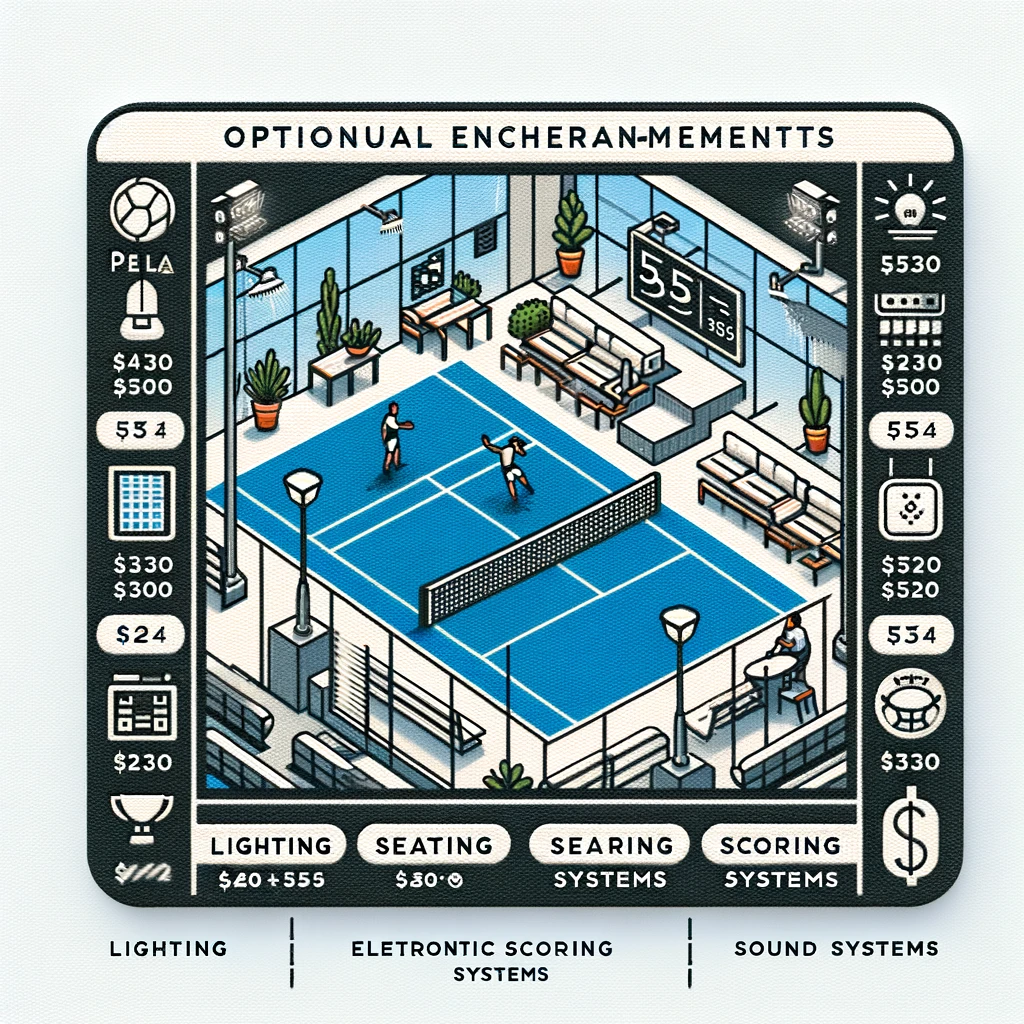
Adding optional features to a padel court can significantly enhance its appeal and functionality but also impacts the overall investment cost. Here’s an overview of some popular enhancements and their cost implications.
Optional Enhancements
- Lighting: Installing high-quality LED lighting systems is crucial for evening play. Costs can vary based on the complexity of the installation, but generally range from $5,000 to $10,000.
- Seating and Spectator Areas: Adding seating such as bleachers or individual chairs enhances the spectator experience. This can cost anywhere from $1,000 for basic seating to over $10,000 for high-end spectator stands.
- Advanced Scoring Systems: Electronic scoring systems add a professional touch and are priced around $2,000 to $3,000.
- Sound Systems: Integrating a sound system for music and announcements can improve the atmosphere, typically costing about $1,500 to $3,000.
Cost Analysis of Additional Features
The decision to add these features should be driven by the target audience and intended use of the facility. While they increase initial costs, they can also potentially generate higher returns through increased bookings and hosting of competitive events.
Long-Term Value: Maintenance and Upkeep
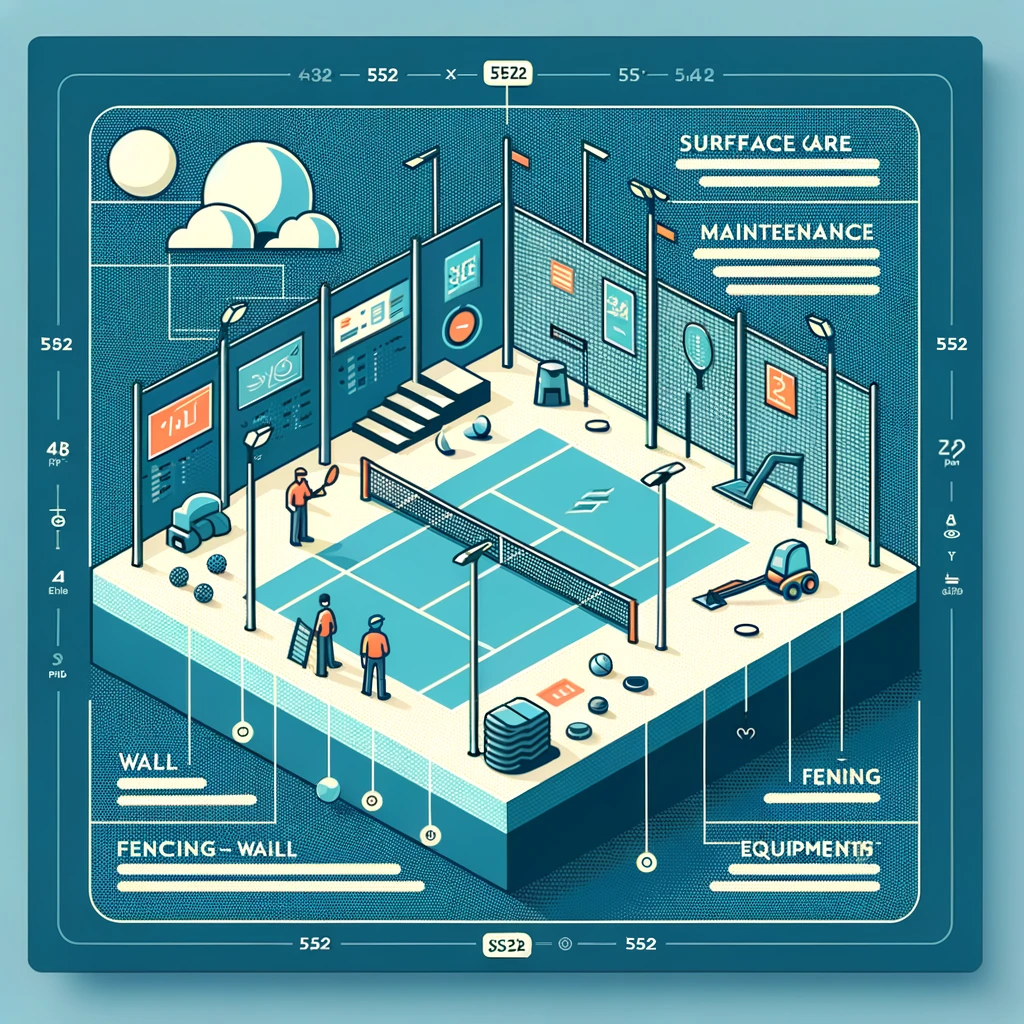
Maintaining a padel court is crucial for preserving its long-term value and ensuring it remains a competitive and attractive venue for players. Regular maintenance not only extends the lifespan of the court but also maximizes its profitability by keeping it in optimal playing condition. Here’s an overview of ongoing maintenance requirements and their associated costs.
Ongoing Maintenance Requirements
- Surface Care: Depending on the type of surface (synthetic turf, artificial grass, or resin), regular cleaning and occasional replacement are necessary to maintain quality and performance. Costs for maintenance can range from $1,000 to $3,000 annually.
- Wall and Fencing Maintenance: Glass walls need regular cleaning and occasional replacement of panels to ensure visibility and safety. Metal fencing may require painting or rust treatment. Annual maintenance for walls and fencing can cost between $500 and $2,000.
- Equipment Upkeep: Nets, posts, and other padel equipment should be inspected and replaced as needed to prevent accidents and ensure fair play. This typically costs around $500 per year.
Impact of Maintenance on Long-Term Value
Regular maintenance not only keeps the facility safe and appealing but also enhances its reputation, potentially attracting more patrons. Neglecting upkeep can lead to higher costs down the line and diminish the venue’s appeal, affecting revenue streams negatively.
Comparative Analysis: Padel Court Prices
How much is a padel court worth?

Conducting a comparative analysis of padel court costs across different regions can provide valuable insights into market trends and help investors make informed decisions. This section will explore how prices vary by location and the factors influencing these variations.
Price Variations Across Regions
- Urban vs. Rural: Padel courts in urban areas typically incur higher costs due to increased land prices and labor rates. In contrast, rural areas might offer cost savings in these aspects but could require additional investment in infrastructure.
- Country-Specific Costs: The cost of materials, labor, and regulatory compliance can vary significantly from country to country. For instance, European countries might have higher standards for construction which can increase costs, whereas in some developing countries, lower labor costs might reduce the overall expenses.
Factors Influencing Price Variations
- Economic Conditions: The local economy plays a crucial role in determining costs. Regions with higher economic activity and purchasing power often see higher prices due to demand.
- Availability of Materials: Regions closer to suppliers of key materials such as synthetic turf or resin might enjoy lower prices due to reduced transportation costs.
- Regulatory Environment: Stringent building codes and environmental regulations can increase the costs in some regions as compared to others where the regulatory burden is lighter.
Investment Perspective: ROI on Padel Courts | How much is a padel court worth?
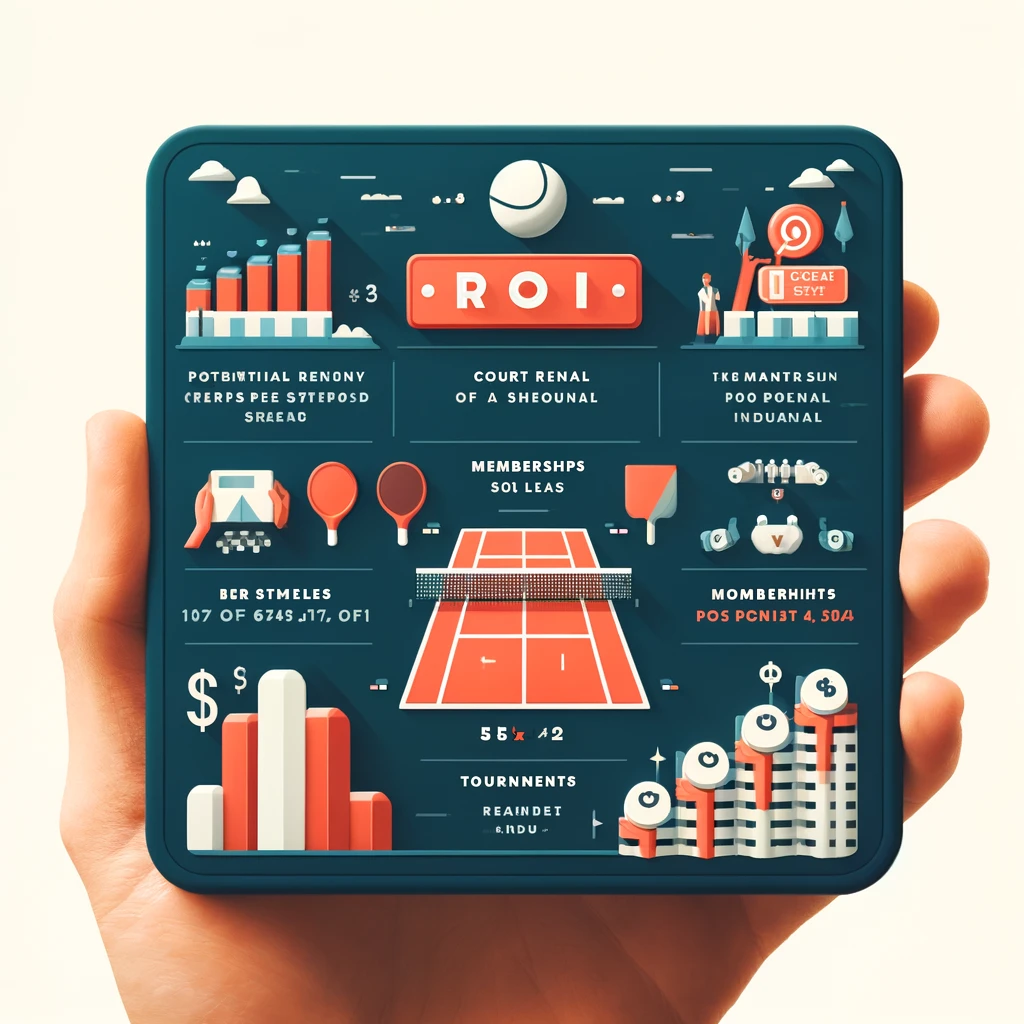
Understanding the return on investment (ROI) for padel court ownership is crucial for investors considering entering this market. This section will delve into the potential revenue streams and cost-benefit analysis to determine the financial feasibility of padel court projects.
Analysis of Return on Investment
- Revenue Streams: Padel courts can generate income through various channels:
- Court Rental Fees: Charging players to use the court during designated times.
- Membership Fees: Offering memberships that provide players with certain benefits, such as reserved court times or discounts on events.
- Tournaments and Events: Hosting competitions and social events can attract larger crowds and increase revenue.
- Ancillary Sales: Selling sports equipment, refreshments, and merchandise related to padel.
- Cost vs. Revenue: To evaluate the ROI, it’s essential to consider the total investment costs—including land, construction, and ongoing maintenance—against the expected revenue from these streams.
Potential Revenue from Owning a Padel Court
- Case Studies: Successful padel courts often report high utilization rates, with peak hours fully booked weeks in advance. This high demand can significantly boost revenue, making the investment potentially lucrative.
- Market Trends: The popularity of padel is growing globally, influencing higher returns in regions where the sport is becoming a mainstream activity.
Long-Term Financial Benefits
- Property Value Increase: Developing a sports facility like a padel court can increase the overall value of the property.
- Community Engagement: Padel courts can serve as community hubs, enhancing local engagement and supporting ancillary businesses.
Case Studies and Real-World Examples | How much is a padel court worth?
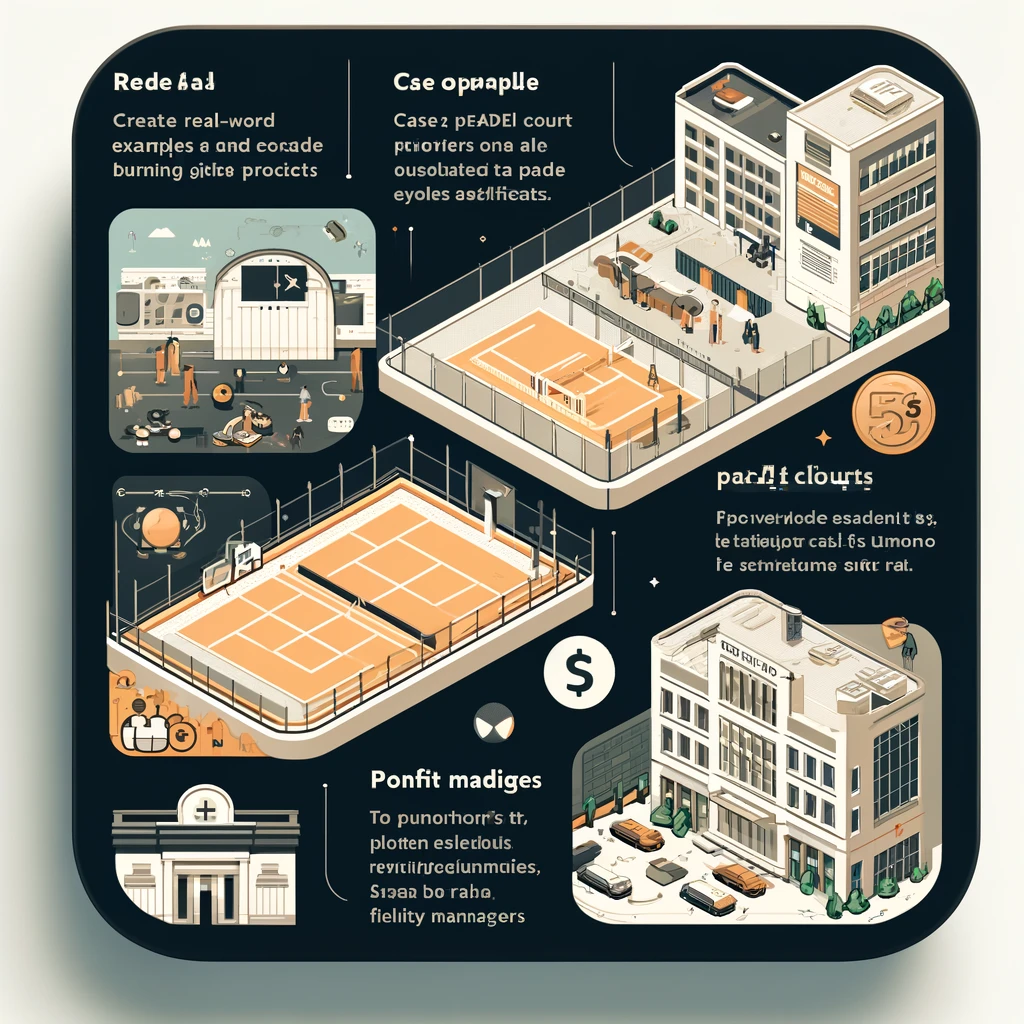
Exploring real-life examples of How much is a padel court worth? construction projects and their costs provides practical insights into the profitability and challenges associated with such investments. This section will highlight several case studies to illustrate the real-world implications of owning and operating a padel court.
Successful Padel Court Projects | How much is a padel court worth?
- Case Study 1: A padel court in Spain that saw a return on investment within the first year due to high membership sign-ups and regular tournament hosting.
- Case Study 2: A community center in Sweden that integrated padel courts and saw an increase in local engagement and ancillary business revenues.
- Case Study 3: A commercial sports facility in the United States that utilized advanced marketing strategies to fully book its courts during peak and off-peak hours, maximizing profitability.
Insights from Investors
- Profit Margins: Investors in these projects often report profit margins ranging from 20% to 40%, depending on location and operational strategies.
- Challenges Faced: Common challenges include navigating zoning laws, securing initial funding, and managing ongoing maintenance costs effectively.
- Advice for New Investors: Seasoned investors recommend thorough market research, strategic location selection, and robust marketing to ensure high utilization and return on investment.
Testimonials from Facility Managers
- Manager Experiences: Facility managers highlight the importance of customer service and regular facility upgrades to retain a competitive edge.
- Operational Tips: Effective scheduling, leveraging technology for bookings and promotions, and engaging with the community through events are key strategies for success.
Conclusion: Is a Padel Court Worth the Investment?
How much is a padel court worth?
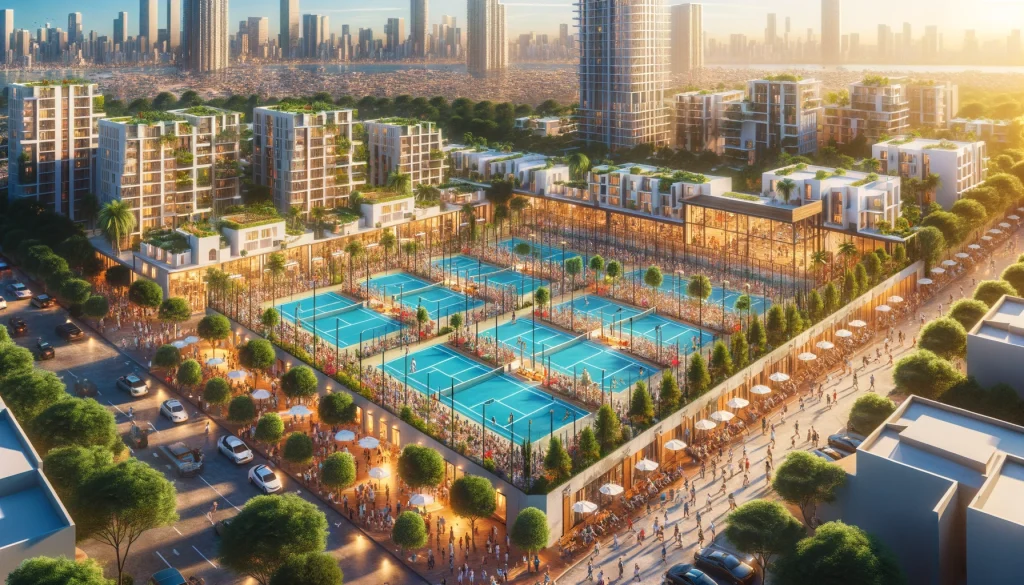
As we conclude our exploration of padel court construction and operation, the core question remains: Is investing in a padel court worth it? Based on the detailed cost breakdowns, potential revenue streams, and real-world success stories presented, it is clear that padel courts can be a profitable venture when executed with careful planning and strategic management.
Recap of Key Factors
- How much is a padel court worth? Cost Analysis: Initial and ongoing costs need careful consideration to ensure they are balanced with potential earnings. The diverse factors affecting costs—from land acquisition and construction to maintenance and legal fees—highlight the complexity of such investments.
- Revenue Potential: The various revenue streams, including court rentals, memberships, tournaments, and ancillary sales, offer multiple ways to generate income, making padel courts an attractive investment.
- Market Trends: The growing popularity of padel worldwide provides a favorable environment for new courts, as public interest in the sport continues to rise.
Final Thoughts on Investment Value
Investing in a padel court can indeed be worthwhile, particularly in regions where the sport is gaining traction. With proper market research, a strategic location, and robust operational strategies, investors can achieve significant returns. Moreover, padel courts add value to communities by providing a recreational space that encourages physical activity and social interaction.
FAQs on Padel Court Investment
What are the initial costs of building a padel court?
The initial costs include land acquisition, construction, materials, and legal fees, generally ranging from $12,000 to $50,000 depending on location and specifications.
How can padel courts generate income?
Income streams include court rentals, membership fees, hosting tournaments, and ancillary sales such as equipment and refreshments.
What is the ROI for a padel court?
ROI varies but can be highly lucrative, especially in regions where padel is popular, with some facilities recovering costs within the first year.
What are the ongoing costs associated with maintaining a padel court?
Ongoing costs include surface maintenance, equipment updates, and utilities, generally ranging from $1,000 to $5,000 annually.

